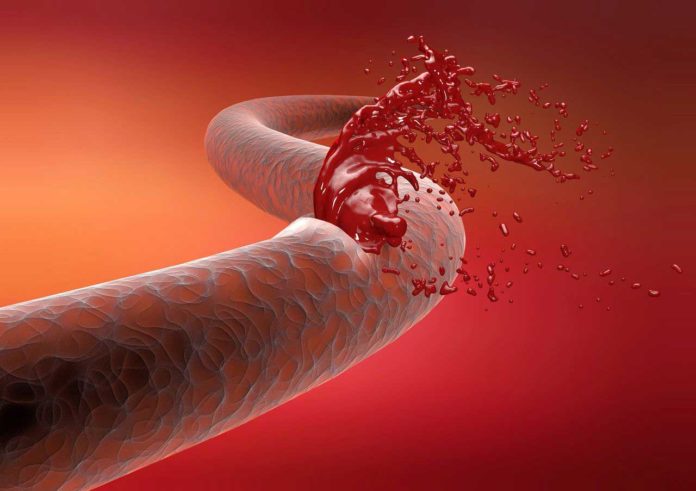Bleeding is a major surgical complication. Although mortality rates of 0.1% are observed for surgical procedures, it may be 5% to 8% for elective vascular surgery, and increase to 20% in the presence of severe bleeding.
Uncontrolled bleeding leads to a combination of hemodilution, hypothermia, consumption of clotting factors, and acidosis, which in turn worsen the clotting process, further exacerbating the problem in a vicious bloody circle.
Existing hemostatic agents poorly control hemorrhaging from traumatic arterial and cardiac wounds because of their weak adhesion to wet and mobile tissues.
A team of scientists affiliated with several institutions in China has recently devised a hydrogel that can proficiently stop bleeding from a punctured artery. Made from water, gelatin and a mix of proteins and other chemicals, this hydrogel is designed to be as close as possible in structure to human connective tissues.
The gel thickens and solidifies itself in the exposure to UV light, thus it adheres the wound, preventing blood from flowing out. And it does so in just 20 to 30 seconds. What’s more, it can stand up to 290-mmHg blood pressure—much higher than normal.
Scientists tested their hydrogel by piercing the carotid artery of a test pig and then used their gel to close the wound. They report that not only did the hydrogel close the wound (and save the pig’s life) it also allowed the wound to heal—testing two weeks later showed little to no necrosis or inflammation.
Also, scientists found that the hydrogel decomposes in the body harmlessly. The team also tried their hydrogel on a rabbit by cutting and repairing its femoral artery. They also poked a hole in its liver and used the gel to stop the bleeding. More work will need to be done to further test the safety of the gel before it can be tried in human patients.
